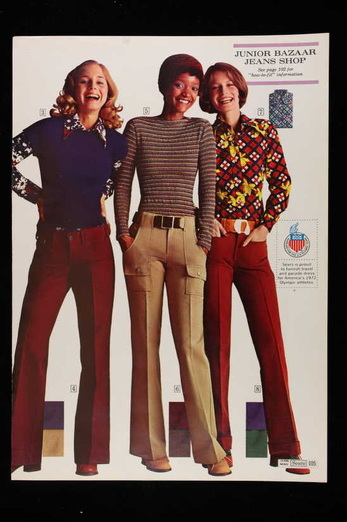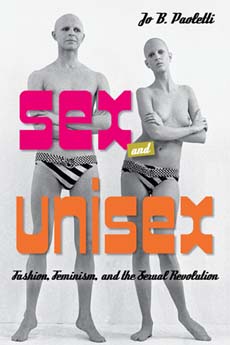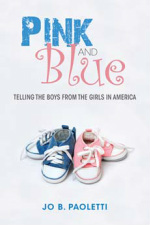I know it's been quiet here. I got clobbered by the semester, which ends in about three weeks. Watch this space.
|
Pop Matters has posted an excerpt from the book. Enjoy this free sample!
I know it's been quiet here. I got clobbered by the semester, which ends in about three weeks. Watch this space.
0 Comments
I can't resist sharing my favorite warning about the dangers of pants for women, from none other than physician Robert Bradley, author of the very-popular Husband-Coached Childbirth. I strongly feel that the current rash of vaginal infections is related to women dressing in men's-style clothing. I'm an old square who thinks women look graceful and feminine in long skirts with lace and frills to accentuate their femininity. Pioneer women wore long skirts with no underclothes--at least for working--and had far fewer bladder infections than modern women who wear slacks, especially tight, rigid denims, and panty hose. In addition, the exercises of squatting and tailor sitting can be performed so much more easily in a large, loose skirt than in tight-fitting slacks. This was a popular "science-based"argument in the 1960s and 70s for why women should not wear pants. (Strangely, it was not used to discourage us from wearing underpants!) Later studies found trousers innocent on all charges; instead the major culprits were nylon panties and pantyhose.
If you asked someone in the fashion industry, unisex was a fad that came and went in one year: 1968. For that brief moment, the fashion press hailed gender blending as the wave of the future, and department stores created special sections for unisex fashions. Most of these boutiques had closed by 1969. However, in the more mainstream realm of Sears, Roebuck catalogs and major sewing patterns, “his ‘n hers” clothing – mostly casual shirts, sweaters and outerwear – persisted through the late 1970s. The difference between avant-garde unisex and the later version is the distinction between boundary-defying designs, often modeled by androgynous-looking models, and a less-threatening variation, worn by attractive heterosexual couples. Also: one more chapter to go! Huzzah!!!
I've been collecting dozens -- no, make that hundreds -- of images as part of my research and I want to share them with you all, because they are fun, thought-provoking and even astonishing.
They are all here on my new Tumblr, Gender Mystique. Enjoy! 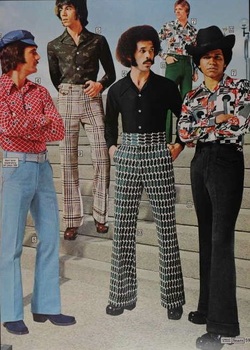 How could I not like 1974?
And if you were feeling down, all you had to do was spend a few minutes in the men's section of your local department store. As I finish the chapter on children's clothing, I'm sorting through my images and videos about adult fashions. Here's one you'll enjoy, from an early Soul Train episode. Notice the range of gender expression, on both men and women. A thought: did African American men have more or less leeway in this realm than white guys? My first impression is more, but also that I may be dazzled by the flashiness. From the Perryville, Arkansas school dress code, 1972: After checking in some stores and talking with parents concerning the girls' dress, we have decided to relax the code. We will allow jeans that are made for girls to be worn, providing: 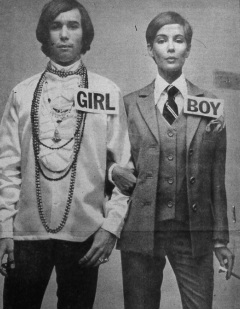 I came across some interesting thoughts on unisex fashion in "Looking Good", published in 1976. The author, Clara Pierre, was writing from the perspective of an industry insider observing what she expected to be permanent changes in fashion. In chapter 10 "From bralessness to unisex", she explains the connection between sexual liberation and unisex clothing as a process of increasing comfort various aspects of sexual identity and expression: "for whatever reason, we began to feel more comfortable first with sex pure and simple, then with homosexuality and now with androgyny" That was then and this is now, as they say. Clearly, some people thought that the culture wars over sex was over, even as it was just beginning. So, I wonder: what happened? Our of curiosity, I just checked to see what the Berg Encyclopedia of World Dress and Fashion had to say about unisex clothing in the 1970s. The index pointed me to an article about Rudi Gernreich and this:
Attempts to develop unisex clothing in the 1970s had about as much success as the bloomer did in the 1850s. Even though women had adopted pants, they did not want to dress the same as men. Sexual distinctions remained even when a woman borrowed her husband’s shirt. It was not supposed to look the same on the woman. So it seems that the tradition of distinguishing the sexes through their clothing remains intact today. Does this remind anyone else of the description of Earth in Douglas Adams' classic Hitchhiker's Guide to the Galaxy -- "mostly harmless"? What about the resistance to women in pants? When I moved to DC in 1976, there were still restaurants where a pant-suited woman was unwelcome. (No matter how expensive the suit!) And yes, we still distinguish between the sexes through clothing, but not the same way we did in 1850 or 1950 or 1980.Now I am even more eager to get this next project underway! |
Jo PaolettiProfessor Emerita Archives
January 2023
Categories
All
|
